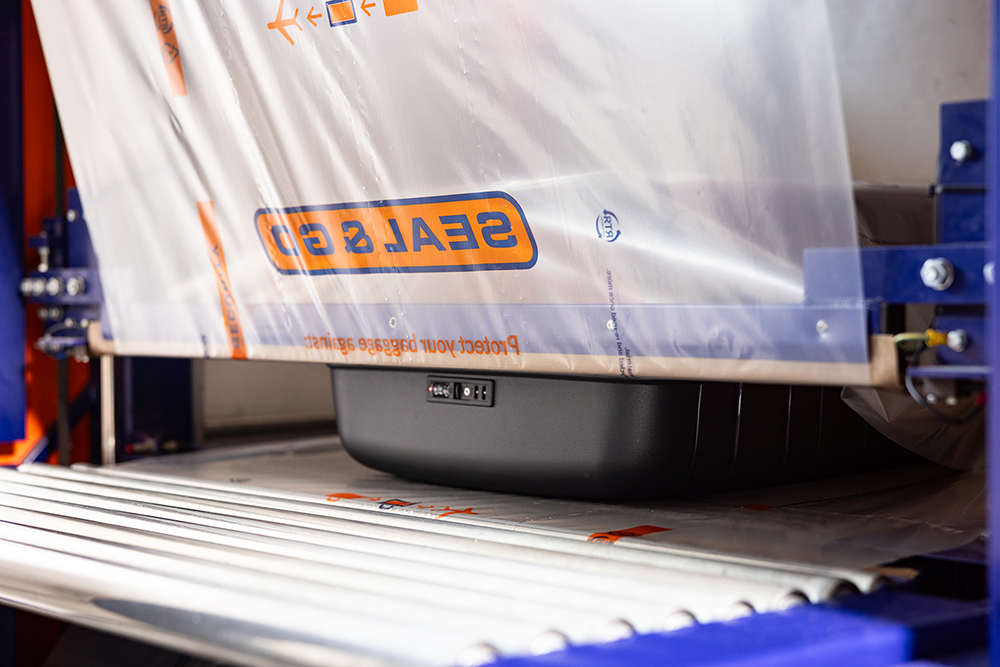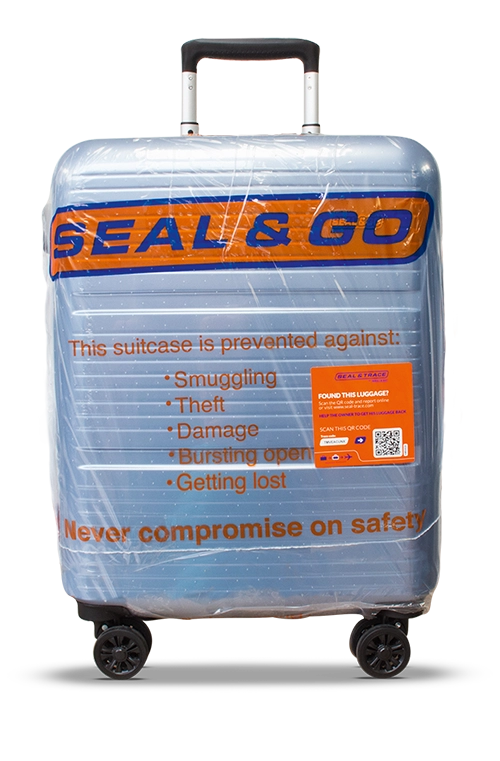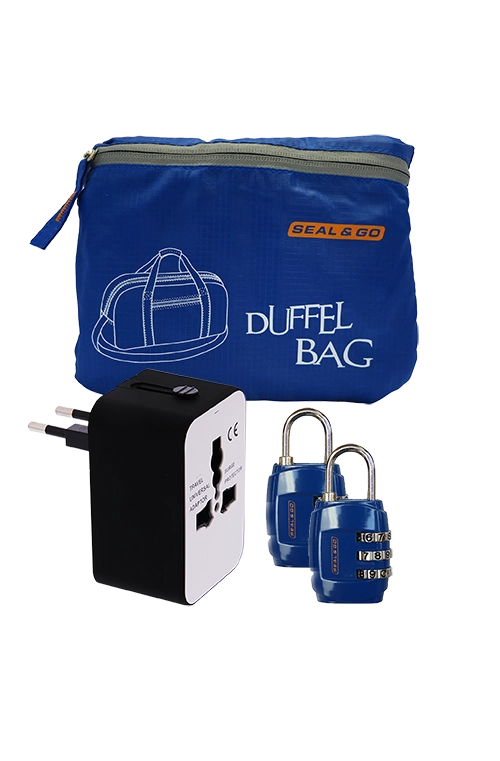WE CARE. WE USE RECYCLED PLASTIC.
Obviously, Seal & Go is aware of the fact that stretch and shrink foil harm the environment and contribute to the problematic plastic soup in the ocean. We feel it as our responsibility to improve the quality of our foil and focus on innovation. Our ultimate dream is to deliver a complete baggage protection concept that does not harm the environment in any way.
Innovative Airport Solutions
Social responsibility is a demand of staff, management and consumers. Providing the highest possible quality on one hand and being as environmental friendly as possible on the other, motivates us to be the most innovative brand within our industry. Seal & Go has always been in the front seat considering innovative solutions, and we will make sure to stay there, especially when it concerns such an important matter as the environment. We focus on using less foil and using a greener type of foil.
Less Foil
Our sealing machine only needs one layer of shrink foil of approximately 2 meters to protect one piece of baggage. Sealing foil only adds around 75 grams to the baggage. Baggage wrapping needs multiple layers of stretch foil (about 13 meters), adding about 200 grams to the baggage.
Recycled Plastic
Seal & Go shrink foil used for baggage sealing contains 80-100% post-consumer regenerate (PCR). Seal & Go stretch foil used for baggage wrapping contains 100% PCR. PCR is a raw material made from LDPE that has already had a previous life as a plastic product on the consumer market.

Seal & Go sealing foil, 80-100% PCR
Why not use oxo- or biodegradable
Biodegradable foil can be decomposed by bacteria or other living organisms and thereby avoid pollution. But it is important to keep in mind that degradation efficiency depends on specific environmental conditions. Besides, most of the so-called biodegradable plastics used by our competitors, are actually not biodegradable but oxo-degradable. Oxo-degradable plastics initially disintegrate and enter the environment as tiny plastic fragments, which are at the root of the micro-plastics problem the world is currently facing. So, actually it is not fully degradable and therefore even more harmful to the environment.



